Video by Yesenia Alvarado and Esther Moreno/The Et Cetera
By YESENIA ALVARADO
@YeseniaA_ETC
As macabre as celebrating with the dead may sound, to Mexicans it is a celebration of heritage, culture and life.
Festivity preparations begin Oct. 31. On Nov. 1, participants celebrate All Saints’ Day for the young children and Nov. 2, Day of the Dead is celebrated. Following tradition begins with building an altar, visiting and decorating the tomb or gravestone and hosting parties for dead loved ones.
This is one of the only times you see a graveyard with so much life. In Mexico, families adorn cemeteries with candles and food and even hire mariachi bands. The candles and incense are used to guide the souls of the dead into the families’ home.
In the United States, most cemeteries are privately owned. Families move their celebrations home, decorating altars and holding small community parties where people eat, drink and dance to their past ancestors’ favorite songs.
Manuel Tallez, a former Eastfield student and owner of Maroches Bakery in Bishop Arts District, hosts a Dia de los Muertos — Spanish for Day of the Dead — celebration each year with live music, an interactive art workshop, face painting, an altar exhibit and traditional food. The neighborhood encompasses local artists and a large Hispanic community.
According to Tallez, Day of the Dead, or Dia de los Muertos, isn’t about worshipping Satan or death, it’s a celebration of life.
“It’s not politics,” Tallez said. “It’s history. It’s the story of your family, ancestors. It is a tradition of more than 600 years. The altar celebrates life via the histories of our dead. It’s not just a long party. It’s a way to respect our culture, our past and our origin.”
Tallez has researched this ritual all around Mexico by visiting many of the oldest village people.
[READ MORE: Sugar skulls, salsa highlight ‘fiesta’]
According to Tallez, the holiday began in response to the oppression and violence brought to the Aztecs by the Spanish conquistadores. Instead of mourning the dead and following polite religious customs, they rebelled by going back to their native roots. Although they didn’t make human sacrifices anymore, they mocked death and used skeletons and skulls as the main adornment.
Religion wasn’t originally part of the ritual, but because most Mexicans are Roman Catholic, their influence is shown at prayers and a special mass for that day.
The altar, a centerpiece of the celebration, is commonly set up to resemble steps with different levels. The levels represent the pathway the deceased takes to rest in peace. Some people like Tallez believe the altar serves as a portal or pathway between the living and the deceased.
Sugar skulls, the trademark marigolds and the colorful tissue paper known as papel picado surround the altar, which is filled with offerings, known as ofrendas. Because the altar forms a connection to the “other side,” candles, salt and religious icons such as saints and crosses are also included. Some artifacts are to guide the soul, some to ward off evil spirits and others for the souls to enjoy.
To celebrate Day of the Dead, you have to know what your loved ones enjoyed: their favorite food, song, toy, drink or anything else that was a defining possession. Pan de Muerto, or dead bread, is one of the common artifacts on the altar designed to resemble a skull and bones.
Mayra Sanchez, a library staff member, was raised in Mexico and said even though her family moved to Texas, they continue the tradition of assembling the altar.
“We’ve always done it and we keep doing it,” Sanchez said with tears building up in her eyes. “Every year we add people because it’s just how life is.”
The day doesn’t only celebrate the dead ones, it celebrates Mexican tradition, art, culture, family and the fragility of life.
Kathy Carter, one of Eastfield’s librarians, constructs a flat altar dedicated to characters from the common book each year. She has met people who have the wrong idea about the day.
“People say it is a Mexican Halloween,” Carter said. “To me, it’s a combination of the indigenous culture with Catholicism and it’s all about family and honoring people. It celebrates life. The more you have an awareness of your mortality, the more you would be inclined to live everyday as if it were your last.”

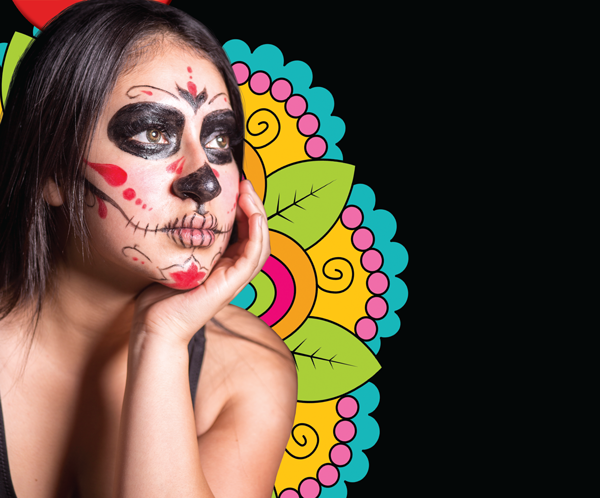
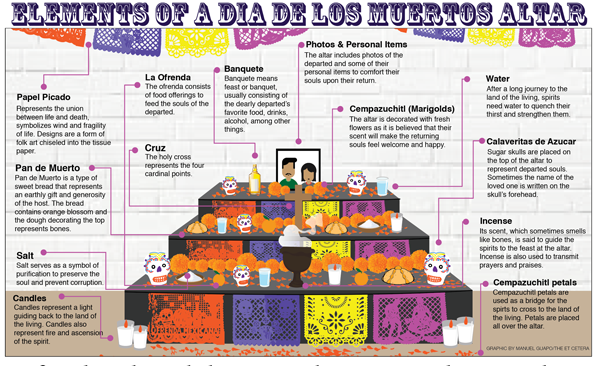

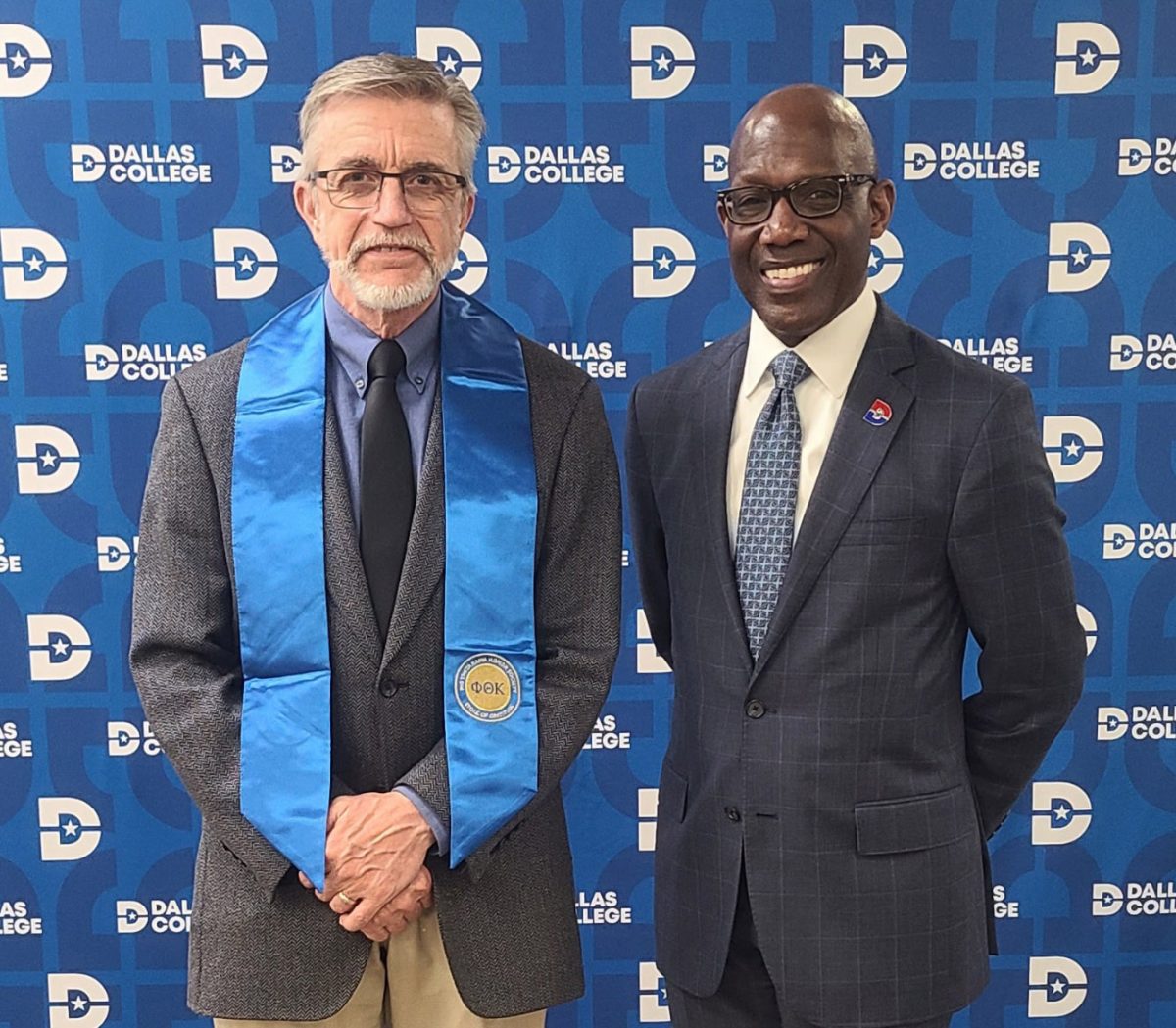
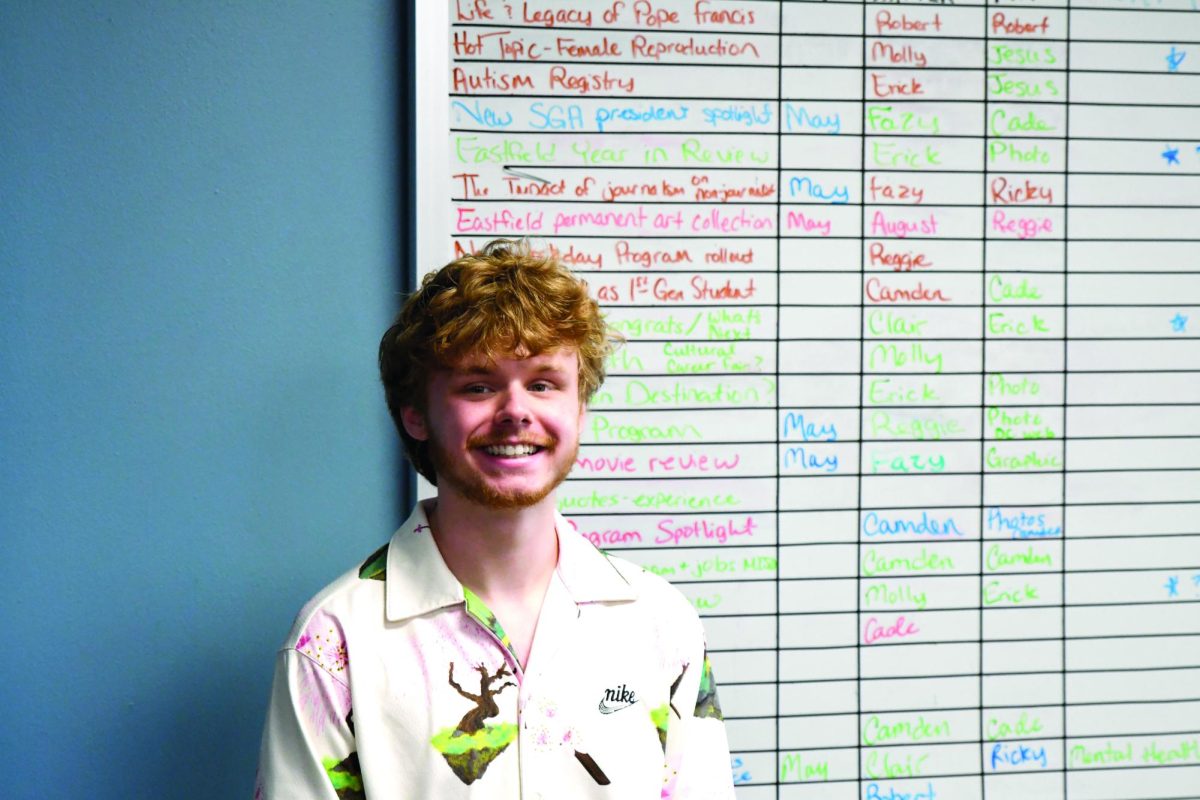

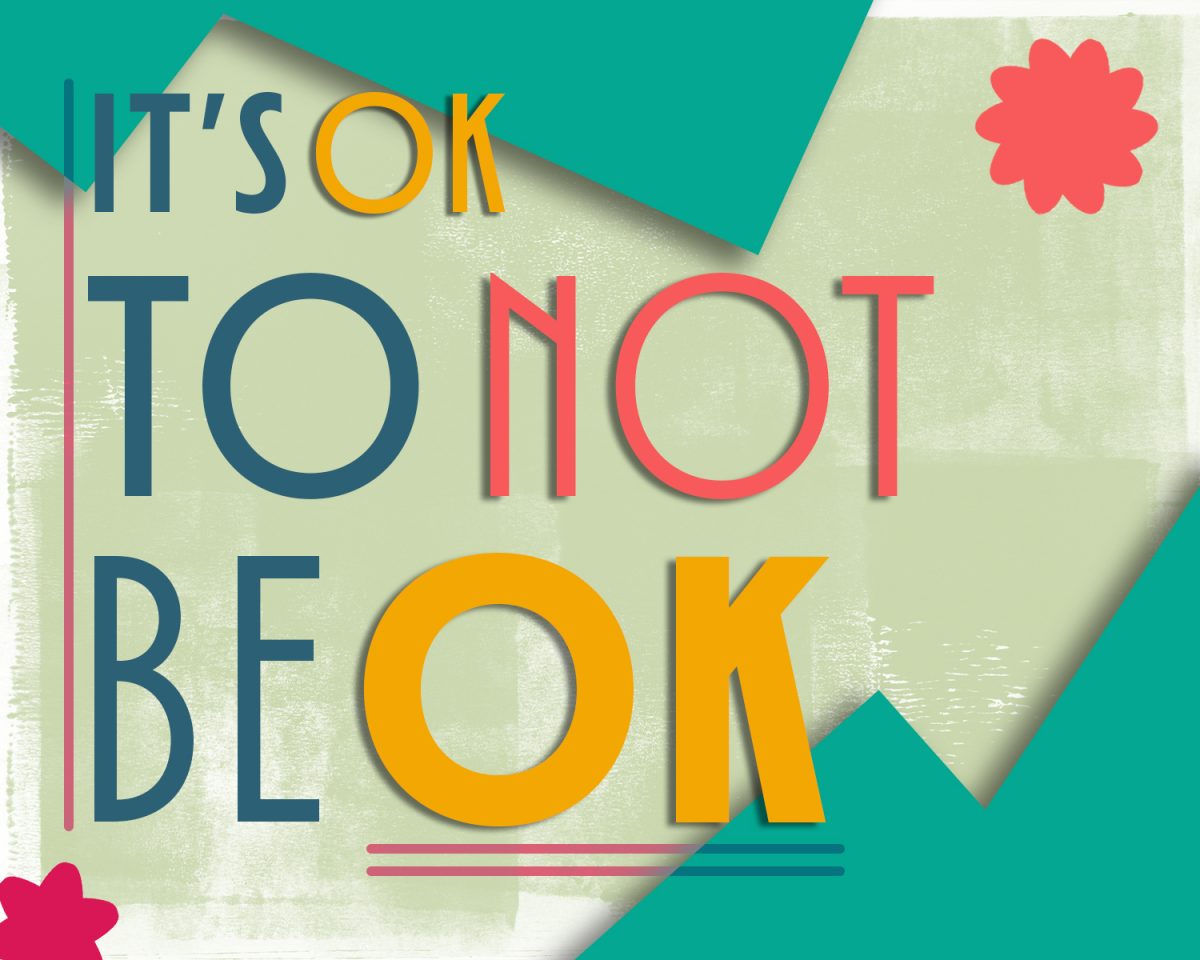

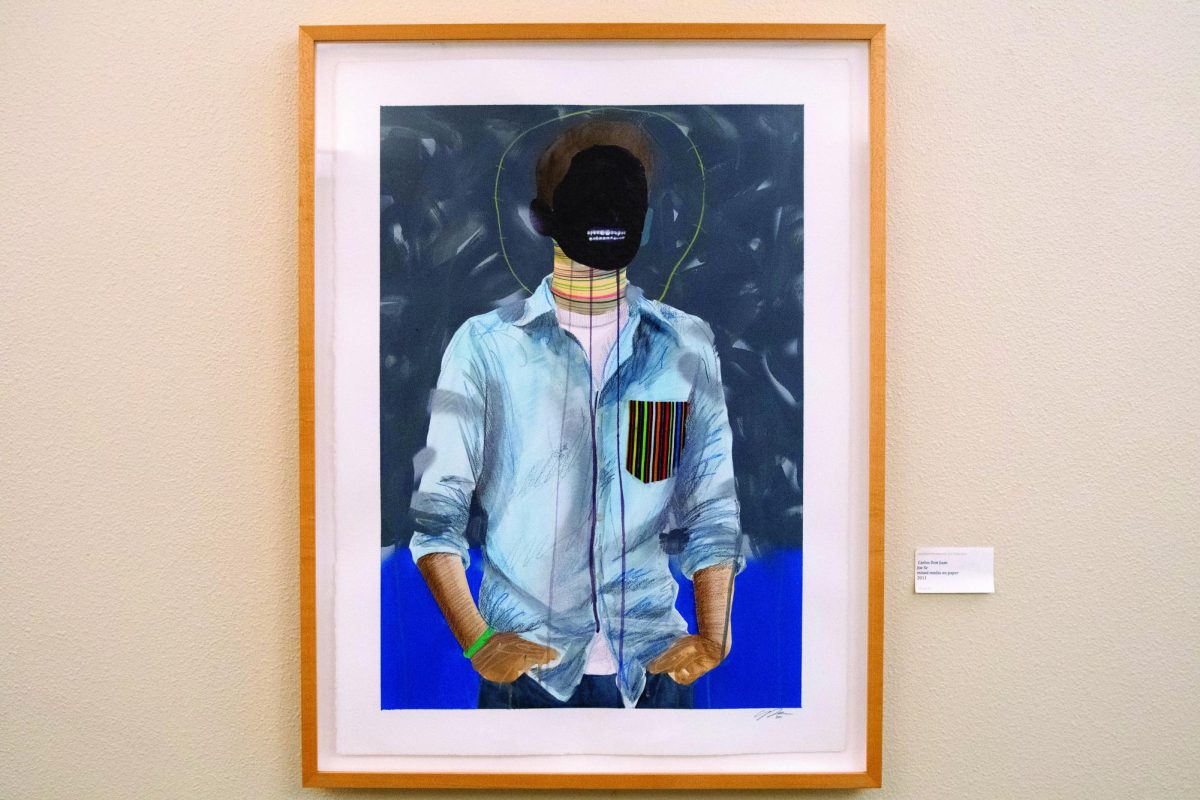
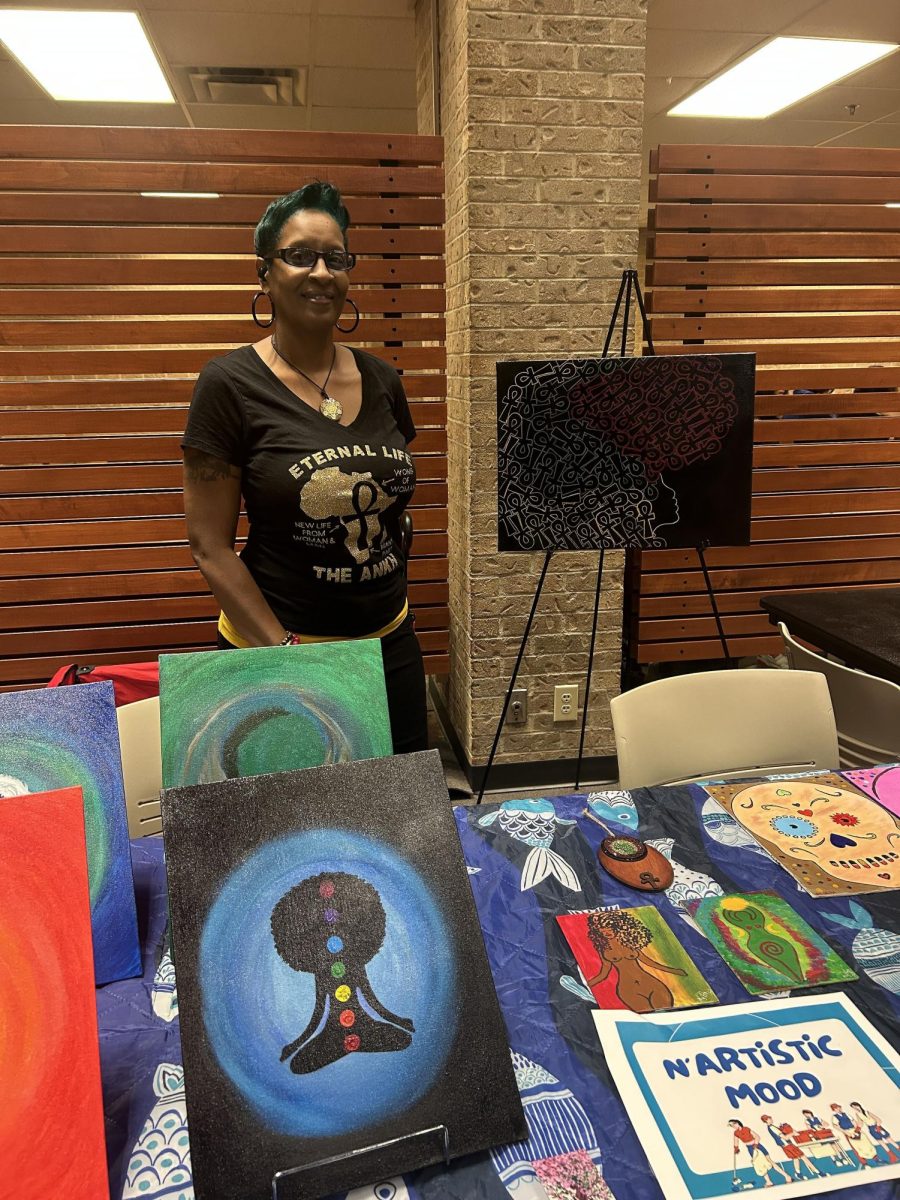



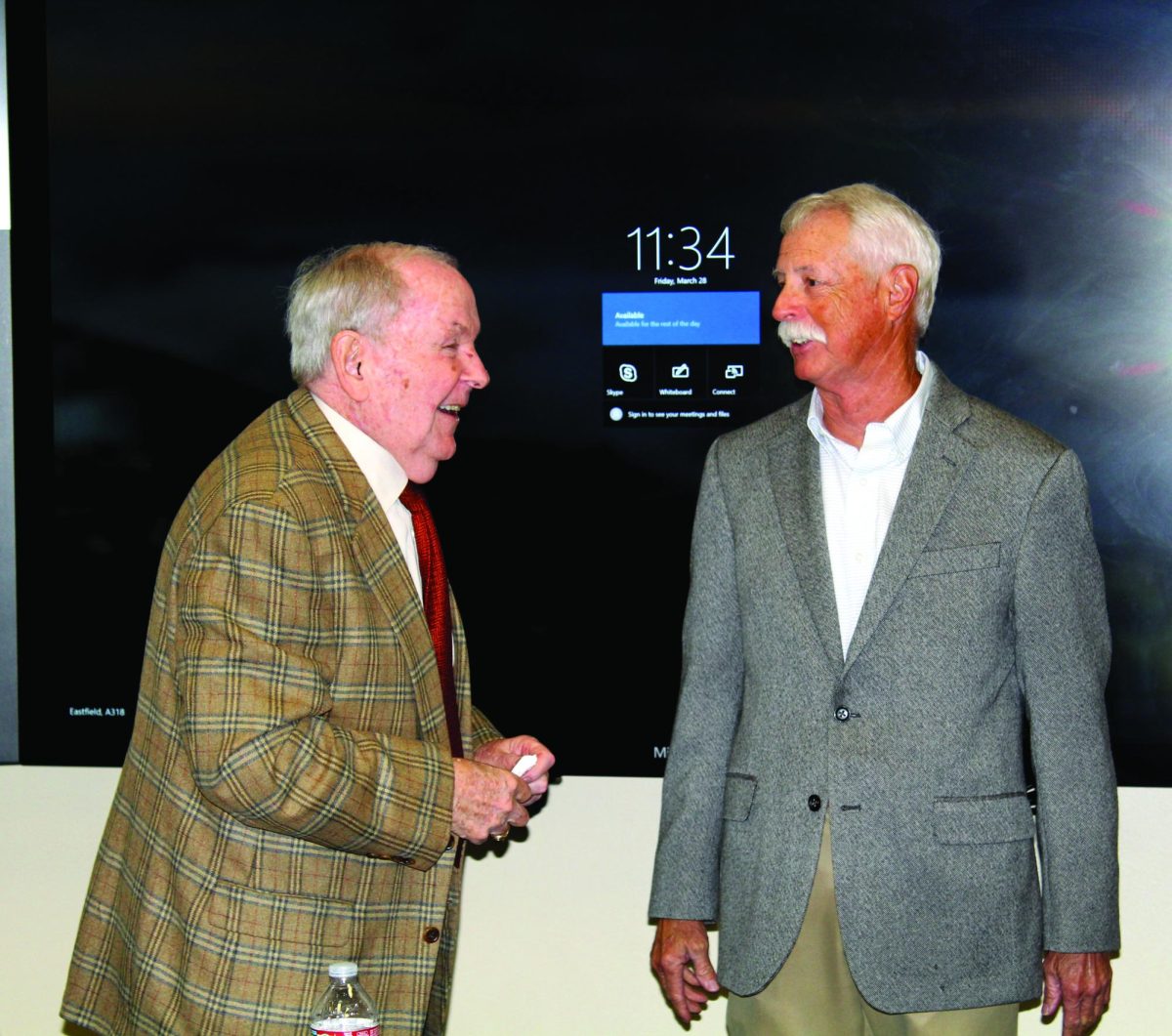
Kim • Oct 7, 2023 at 6:58 pm
Where can I access a better resolution of the graphic of the elements of an altar? It’s the most comprehensive one I have seen.